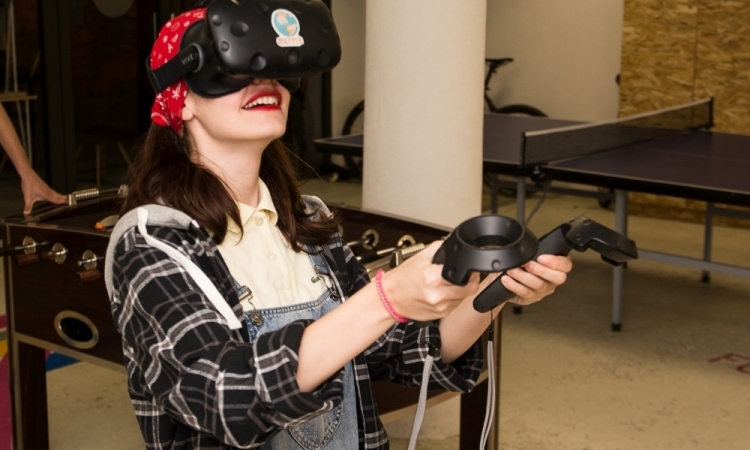VR as Part of a Transmedia Storytelling Kit (VR Days)
»I want to mess with people's heads!« (Simon Wilkinson)


On Tuesday afternoon, the VR Days hosted a talk by Simon Wilkinson, an artist that Sarajevo Film Festival is no stranger to, as his work was exhibited at the SFF's first edition of the VR Days last year. Wilkinson is working with various platforms such as virtual reality, installation, audiovisual, as well as electronic music, online performance, and game play, combining all of those for the purpose of transmedia storytelling. He currently produces work as CIRCA69.
Wilkinson first shared some insights on his beginnings as an artist, when he was a part of the UK group of pioneer event-based cinema enthusiasts intermixing short low-budget videos with live performances and music. He then proceeded with explaining why he sees the decline in theatre and traditional TV watching on the one hand, as well as the rise of the gaming sector, playful media, one on one theatre, and events companies such as Secret Cinema on the other, as an opportunity and necessity for scaling up virtual reality.
By showing us a Walt Disney map from 1957 illustrating how the company was approaching the dispersion of one story into many different spin-offs and media forms (although the purpose was that of money making), Wilkinson introduced the idea of transmedia storytelling as creating an immersive environment that encapsulates the audience in an all-encompassing manner. In that way, he claims, virtual reality can produce its own reality tunnels.
One such reality tunnel is most definitely Wilkinson's The Cube, an artwork reinvestigating a story of disappearance created out of a fragmented false reality. The live show included a number of headphones with different pieces of audio evidence of the story on each of them, an AR gallery, live electronic music, performance, as well as an IOS/Android AR app, and what is more, an unannounced intentionally created extensive online narrative universe that complies with the prediction that more than 60% of the audience continues searching for extra information on the story online on their own. While such a live event may be seen as the tip of the story’s iceberg, we could say that the undisclosed online content, one that usually continues being reproduced by the audience itself, forms its much wider lower part.
In the last part of the class Wilkinson discussed the psychology of attention and defined the VR experience as one bypassing the loophole between subconscious and conscious attention. By presenting us with an example from one of his shows in which the experiences that did not fit into the narrative thread got forgotten, Wilkinson also shed light on how using transmedia storytelling can be employed to play with one person's immediately accessible memories and those that get reawakened later or under certain circumstances. And it is definitely the incorporation of psychological tricks into the transmedia storytelling that sets it apart from the so called immersive technology in general. It is not just about the storytelling, or as Wilkinson puts it, it is there to mess with people's heads.
Petra Meterc